
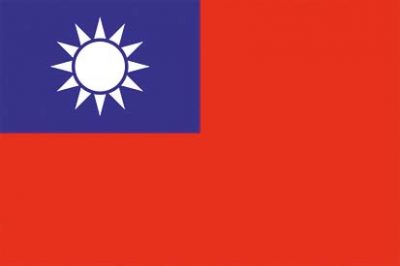 Kaohsiung (pronounced Kow-shung) will be better known to most readers as the graveyard of thousands of British built ships. Today, this former big shipbreaking industry with its attendant pollution and very real dangers to its workforce, has been completely eradicated and replaced with new, cleaner industries and a modern port with a cargo throughput of around 150 million metric tonnes per annum. The Port of Kaohsiung lies near the south western tip of Taiwan and is its principal port and the thirteenth biggest container port in the world with a throughput of 10.6 million TEU in 2014.
Kaohsiung (pronounced Kow-shung) will be better known to most readers as the graveyard of thousands of British built ships. Today, this former big shipbreaking industry with its attendant pollution and very real dangers to its workforce, has been completely eradicated and replaced with new, cleaner industries and a modern port with a cargo throughput of around 150 million metric tonnes per annum. The Port of Kaohsiung lies near the south western tip of Taiwan and is its principal port and the thirteenth biggest container port in the world with a throughput of 10.6 million TEU in 2014.
Kaohsiung City is an important industrial centre with the very large Linhai Industrial Park located next to the port, as well as a shipyard, the Talin Oil Refinery and Power Plant, a steel mill, and many other industries. Kaohsiung has a population of 2.78 million people and is known for its ‘rocket shaped’ tall Tuntex (or 85) Sky Tower of 328 metres in height. This 85 storey skyscraper was designed by architect C. Y. Lee and construction started in the Lingya District near the port in 1994 and opened three years later at a cost of five billion Taiwanese dollars. The capital of Taiwan is Taipei at the northern end of the island with a population of 23.0 million people, and the island has large modern textile, electronics, plastics and other industries. The Port of Kaohsiung is located at 22º 33’ N, 120º 18’ E.
The British In Kaohsiung
After the signing of the Convention of Peking in 1860 during the Qing Dynasty, Takao Harbour (Kaohsiung Harbour) was opened to foreign traders in 1863. The increasing commercial shipping trade and the lack of a proper ship navigation channel, led to British engineers being invited in 1883 to build a Chinese style rectangular red brick lighthouse on Cijin Island and opposite Mount Longevity (Mount KIau in Chinese, elevation 1,180 feet) on the other side of the harbour. This mountain is now home to the Shoushan National Nature Park and was also formerly known as Mount Shoushan.
During the Japanese rule of the island, and in line with the expansion of the harbour, the lighthouse was rebuilt in 1916 with a Baroque style base. Today, the lighthouse has been restored and painted white as an historic Class 3 building by the Ministry of the Interior of Taiwan. It is open to the public with the tower providing the very best possible vantage point of the entire Port of Kaohsiung. The light beam has a range of 25.2 nautical miles and is situated at 191 feet above the base.
The British Consulate at Takao was designed by a British architect and built by McPhail and Company in 1865 in the ‘Late Renaissance Baroque’ style with a long ground floor and beautiful arched facades on two sides. The British Consulate was built on a hilltop overlooking the bay with Hsizuhwan Bay on one side and the Port of Kaohsiung on the other. The British Empire was at the height of its power at this time, and was the first western power to be invited into Formosa (Taiwan) to establish a consulate. Robert Swinhoe was appointed as Vice Consul in 1861 but was unable to take up his post until the following year in a temporary building. The building materials for the new consulate were shipped across to Formosa from Amoy on mainland China, and Robert Swinhoe remained as Consul until his retirement in 1873.
The 1895 Treaty of Shimonoseki following the First Sino-Japanese War ceded the island of Formosa to the Japanese. The Japanese Government of Taiwan in 1909 claimed the right to all foreign consulates and the British consulate was closed in the following year. The Japanese Viceroy converted the building into an Ocean Observatory in 1931, and it survived World War II unscathed as a white painted building that was converted into a Weather Bureau Observatory in late 1945. Taiwan was handed over to China at this time and the building continued in use in the same capacity for forty years. In 1986, the building became a museum in which to store historic and cultural documents, and it was opened to the public in September 2003. Currently, over 400,000 tourists visit the former British Consulate with much of local history on display and including 312 oil paintings of the surrounding district.
British businessman John Elles commissioned the Custom House official residence on Daku Hill in the Shaochuantou District of Kaohsiung in 1869. This gave the city a much more international profile, and the Customs House officials proposed expanding the harbour in the late 1870s but the Governor of the island cancelled the plans due to a shortage of funds. The harbour was however strengthened from attack by coastal defences consisting of barbettes housing eight Armstrong artillery guns manufactured in Newcastle.
Port Of Kaohsiung
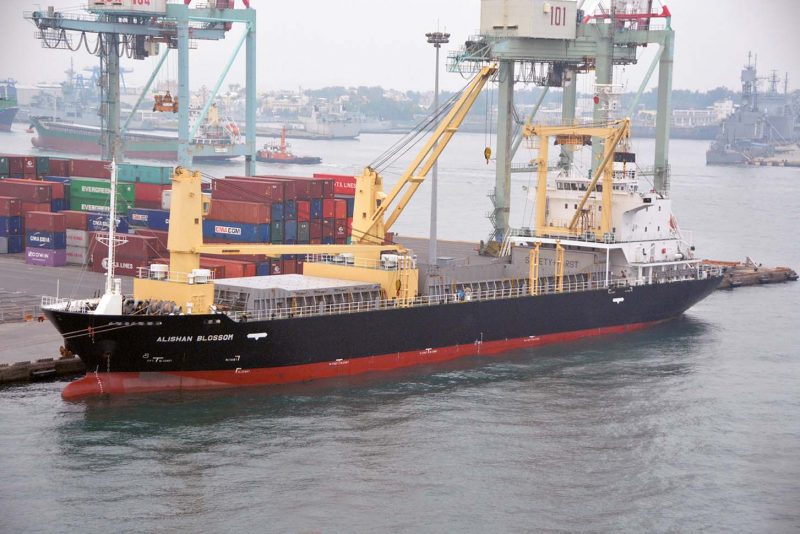
The port is entered through a narrow channel flanked by two piers at the northern end of the port, with the very high Mount Longevity towering over the entrance, and with a second entrance to the port later built at the southern end of the harbour. The large and spacious harbour was built by the Japanese between 1904 and 1907, and they named it Takao Harbour in 1920. A reclamation project was put in place for the wharves, rail connections, port warehouses with much dredging needed of the harbour and the sandbars. The port was handling 1.4 million tonnes of cargo in 1924 with the maximum size of ships allowed to enter being of 10,000 dwt. On the outbreak of World War II, the port had sixteen berths and 25 warehouses and the total trade of imports and exports had increased to 2.5 million tonnes.
The port was used by the Japanese Army and Navy as a military base for their Pacific campaigns during World War II, with the port much increased in size and now containing an aluminium plant. The Allies continuously bombed the port during 1944/45, sinking five ships in the harbour and destroying most of the warehouses. After the surrender of Japan in August 1945, Taiwan came under the administration of the Republic of China and the port was repaired and brought back into operation again. The Chinese Nationalist Party under Chang Kai-Shek lost the ensuing Chinese Civil War, and they moved their government to Taiwan as the Nationalist Republic of China with its capital at Taipei. The port was enlarged and reconstructed by 1955, and three years later a new expansion project was begun that added 544 hectares of shoreline to provide new facilities and increase trade. The Fisher Dock or Banana Dock at Shoushan is today port of the Export Processing Zone of the port.
The second harbour and entrance to the Port of Kaohsiung was completed in 1975 to accommodate the much larger vessels entering the port. In 1980, the Chungtao New Commercial Harbour was opened to add thirty deep water wharves, and work began on a large industrial park that includes a large shipbuilding yard and large container ship terminals. A large fifth container ship terminal was added in 1990, and the Government of Taiwan began to promote the port as a major hub container transhipment facility for the entire Asia Pacific region, as well as a ro-ro logistics port and a Foreign Trade Zone (FTZ). In terms of throughput, it had quickly overtaken the Port of Keelung as the first port of Taiwan, and exported huge quantities of rice, sugar, bananas, pineapples and citrus fruit grown on the fertile west side of the island, the east side being mountainous.
Chang Kai-Shek had died in 1975, and the Taiwanese people had always thought of the Chinese Nationalists as outsiders, leading to revolts and the imposition of martial law. In December 1979, the ‘Formosa Magazine’ organised a pro-democracy rally in Kaohsiung, which quickly turned into a riot with tear gas used by the authorities to dispel the crowds. This led unexpectedly to the rise of democracy in Taiwan and the establishment of the Democratic Progressive Party (DPP), which is the ruling political party today. The incident became known as the ‘Kaohsiung Incident’.
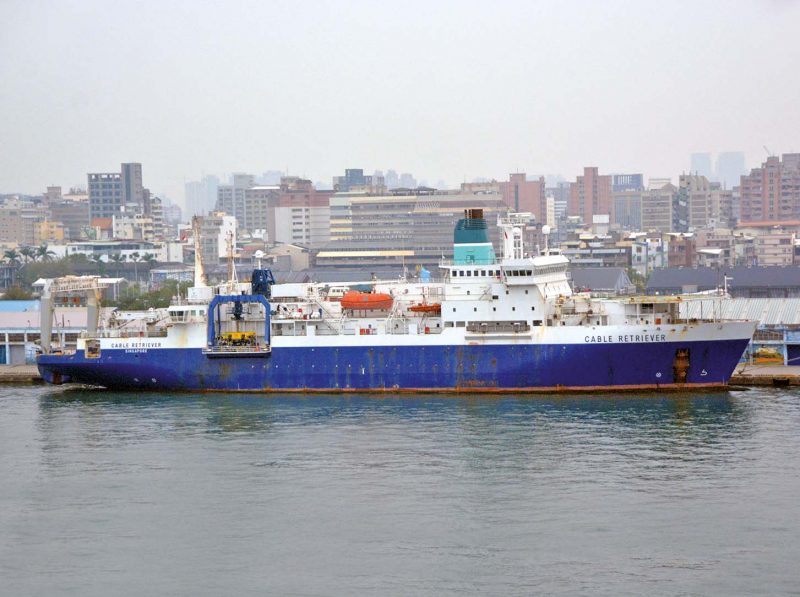
Shipbreaking At Kaohsiung
Shipbreaking at Kaohsiung began after World War II with the salvage of war damaged and wrecked vessels that had languished in Keelung and Kaohsiung ports. These amounted to 178 sunken vessels in Kaohsiung (eleven of over 5,000 grt) and well over one hundred ships in Keelung (five of over 7,000 grt). After the end of the Chinese Civil War in 1949, many small mainland Nationalist river craft made the perilous voyage over to Taiwan, and were damaged or lay anchored for long periods until broken up. The derricks of long demolished cargo ships were re-used for the lifting of removed sections of newly arrived ships. Powerful steam engines and pulley systems were used for the gradual dragging of the hull up the slipway as it was demolished.
Many World War II standard cargo ships were then broken up in the early 1960s, with 90% of vessels arriving for breaking in 1962 being imported ships in this category. After 1973, special loans were available from the Taiwan Government to import vessels for breaking up, but a decade later shortage of space at the big demolition wharves, which were owned by the Government and leased to subcontractors, began to be a problem. An oil tanker blew up on 11th August 1986 at a Darengong demolition wharf, killing sixteen people and injuring another 47 people. The tanker was one of many badly damaged vessels from Exocet missile strikes that were broken up in the mid 1980s after arrival under tow from the Persian Gulf. The Kaohsiung Port Authority then announced a policy of relocating the breaking wharves to further from town to make room for new container terminals, and thus Kaohsiung lost its title of the ‘Shipbreaking Capital of the World’ to breaking yards in Bangladesh, Pakistan and India.
Shipbreaking at Kaohsiung finally came to an end in October 2008 when shipbreaking firms were evicted from their wharves by the Kaohsiung Harbour Bureau in order to make room for a new container terminal. The two dozen demolition berths were used by forty shipbreaking firms and were compulsorily taken over by the Government. The death of the industry resulted after a tumultuous explosion ripped through the tanks of a tanker in the previous year, killing fourteen workers and injuring many scores more, which also showered the city with red hot chunks of steel up to one tonne in weight. Enough was enough of the death, injuries, pollution and filth of an industry that dated back six decades.
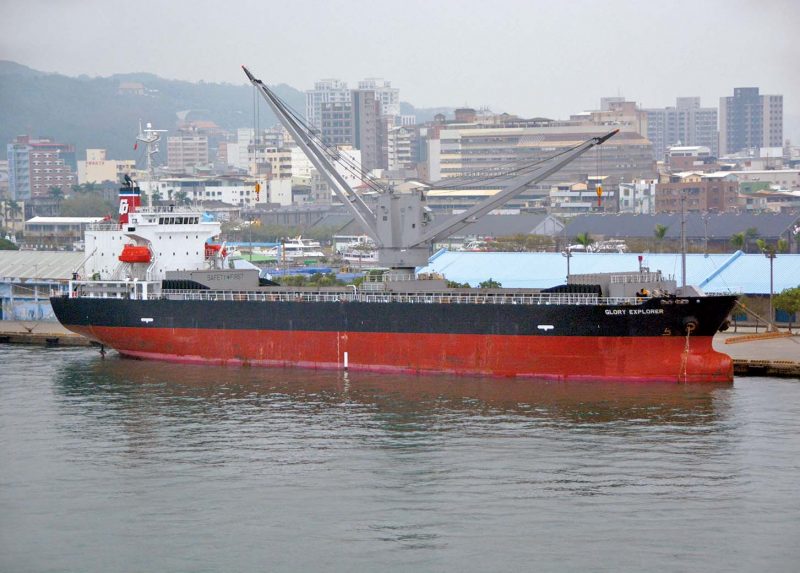
Port Facilities
The Port Authority of the Port of Kaohsiung was, until a change in 2012, the Kaohsiung Harbour Bureau, an external division of the Ministry of Transportation and Communications of Taiwan, which is in charge of all regulations and policy regarding these subjects within the Free Areas of the Republic of China (Taiwan). The channels into the port are dredged to a depth of 14.0 to 15.2 metres with the cargo piers and oil terminal having an alongside depth of 6.4 to 7.6 metres. The container terminal gantries have a lifting capacity of forty tonnes, and mobile cranes and floating cranes have a lifting capacity of over 100 tonnes. The Port Head Office is in the Gushan District with a good view over all of the harbour.
The main import cargoes are metal ores and metal products, coal, chemicals, pulp, paper and printed books, foodstuffs, mineral waters, beverages, alcohol, tobacco, vegetable oils, wood, bamboo and rattan. The main export cargoes are plastics, rubber products, metal products, chemical products, machinery, electrical power equipment, textiles and a whole range of other manufactured products.
The containerised cargo is evenly distributed between imports and exports, and there are seven open yards for the storage of containers. Six container terminals are located within the 397 hectare Foreign Trade Zone that opened for business in 2005. The FTZ and the six container terminals are located three kilometres west of the main Siaogang International Airport. The largest area of the FTZ is covered by the main customers of China Steel, China Petroleum and Petrochemicals, and the huge China Shipbuilding Corporation of Kaohsiung shipbuilding yard.

Intercontinental Container Terminal 6
This Phase 1 of the latest container terminal for Super Post Panamax container ships with four berths, each of length 375.0 metres with an alongside depth of 17.6 metres. There are the latest container stackers and equipment operating in an open yard of 710,000 square metres in area.
Qianzhen Container Terminal 1
There are a total of thirty mixed berths with a total length of 6,925 metres, and an alongside depth of up to 11.0 metres. Four of these berths are for container ships, sixteen for bulk cargo, nine for general cargo, and one for grain cargoes. Red and white huge gantry cranes load and unload ships of Maersk Line, Hyundai, Evergreen, ANL, APL, China Shipping Container Line (CSCL), COSCO, CSV, Hapag-Lloyd, ‘K’ Line, Libra Line, MSC, MOL, NYK, OOCL, PIL, UASC, Wan Hai Lines, Yang Ming and many other feeder container lines e.g. Regional Container Lines of Thailand.
Qianzhen Container Terminal 2
There are a total of eight berths, five for container ships and three for bulk cargo, of total length 2,160 metres with an alongside depth of up to 14.5 metres.
Xiaogang Container Terminal 3
There are a total of six berths with three for container ships and three for bulk cargoes of total length 1,900 metres and an alongside depth of up to 15.5 metres.
Zhongxing Container Terminal 4
There are a total of eight berths, all for use by container ships and each of length 320 metres, with alongside depth of up to 17.6 metres.
Dalen Container Terminal 5
There are a total of eight berths of total length 2,444 metres, all for use by container ships and with alongside depths of up to 14.0 metres.
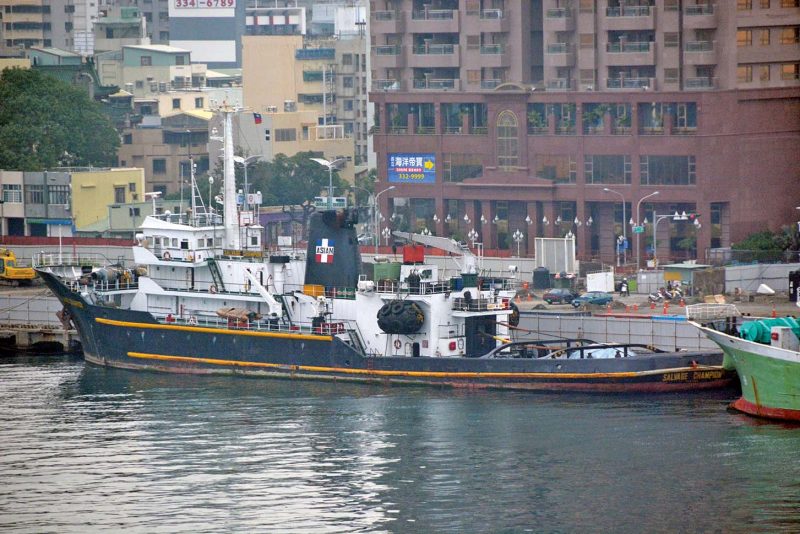
Lingya and Penglai Bulk Terminals
There are eleven dry bulk berths with a total length of 2,350 metres, all of which have an alongside depth of 10.5 metres and warehouse space of 3,400 square metres. There are also two berths for handling dangerous cargo, and two berths for handling cement in silos, and also two grain berths. There also berths totalling 1,500 metres in length with 12,900 square metres of warehouses for other types of general cargo.
Yencheng Ferry Berths
There are two ferry berths to take passengers to Penghu island in the Straits of Taiwan between Taiwan and mainland China, which also double as a cruise berth, with a total length of 619 metres with 2,100 square metres of warehouses. There is a general cargo berth of length 291 metres, and two water recreation berths for small vessels with a total length of 161.5 metres.
Harbour Pontoons And Buoys
In the centre of the large harbour with an average depth of 10.7 metres are fifteen pontoons for general cargo ships, and four buoys for oil vessels.
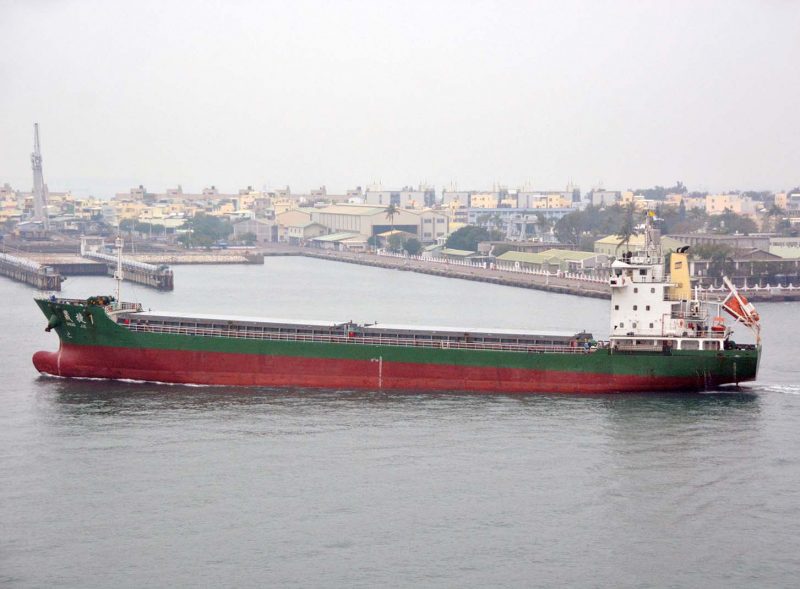

Affiliated Ports
Penghu Island
Ferries leave regularly from Kaohsiung for this the largest of a group of islands in the Straits of Taiwan between Taiwan and mainland China. There are two ports, one in the south east of the island, and the other in the south west of the island. The south east port has nine wharves of length 956 metres with an alongside depth of from 2.5 metres to 8.0 metres. These serve passenger, general cargo and warships and there are open storage spaces and warehouses of 10,000 square metres in area. The south west port has eight wharves of 1,180 metres in length for handling small general cargo vessels.
Anping Port
This is the most important affiliate port, which is being developed as a multi function port to resurrect this one time important port located near Tainan. It handles in excess of ten million tonnes per annum with a full range of port services. A new Free Trade Zone (FTZ) and tourism and water recreation schemes are planned for Anping Port.
Budai Port
This port is located on the west coast of Taiwan to the north of Kaohsiung and can accommodate small vessels at five wharves carrying general cargoes or bulk cargoes of up to 5,000 tonnes, and there also two small wharves to handle cement imports.
Shipbuilding At Kaohsiung
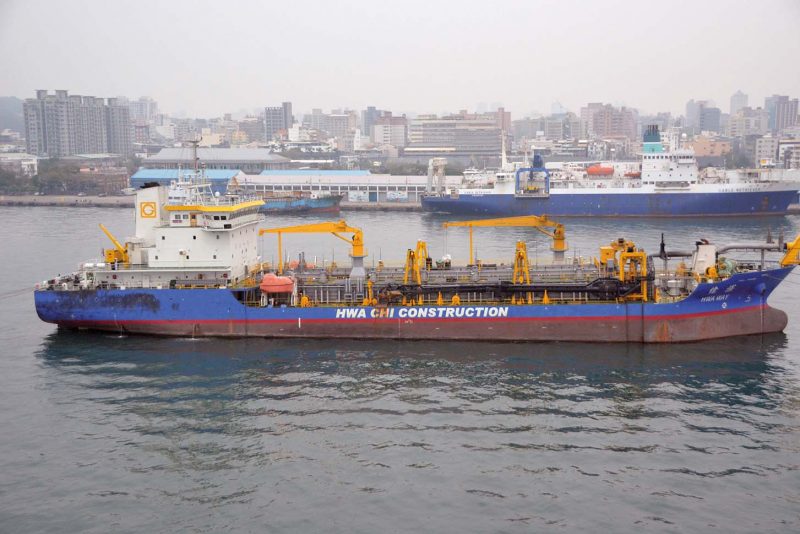
Fu at Kaohsiung.
The China Shipbuilding Corporation (CSBC) of Taiwan was established in 1937 and is the foremost and largest shipbuilding company in Taiwan. Well over eight hundred ships have so far been built for commercial, government and research organisations. Ships are built in standard classes to achieve the cost benefits of standard ship construction, with 22 standard ship types and 194 vessels designed and constructed between 1998 and 2014. These standard types are recognised and have been nominated for awards by the Royal Institute of Naval Architects (RINA). Several types of standard bulk carrier are offered from Handysize (35,000 dwt) through Handymax, Panamax, Kamsarmax and Capesize designs up to a maximum of 203,600 dwt. Standard tankers of Aframax, Suezmax, VLCC and ULCC size have been built e.g. Dar Yun of 260,000 dwt and Burmah Endeavour of 445,000 dwt.
Container ships from feeder container ships of 1,000 TEU capacity up to Post Panamax size of 14,200 TEU capacity, cement carriers e.g. Ta Ho Marine of 12,600 dwt, limestone carriers e.g. Hwa Lien Express of 12,900 dwt, livestock carriers e.g. Rodolfo Mata of 29,872 dwt, jack up oil rigs for Santa Fe International Corporation, reefers e.g. Lombok Strait for Seatrade, tugs, warships and auxiliaries, offshore supply vessels and wind farm installation vessels, are just a few examples of the versatile portfolio of CSBC. Fuel efficient engines are installed with less smoke emissions, and every effort is made to produce ‘green’ vessels that meet all port requirements. There are two CSBC yards on Taiwan, one at Keelung in the north and the other at Kaohsiung. They can both build very large bulkers and tankers, with Kaohsiung building the really massive VLCC and ULCC tankers, and Capesize bulkers. Yard numbers are shared between the two yards and have reached over Yard Number 900.
The CSBC building docks use several red and white painted Goliath Cranes of 350 tonnes capacity to lift prefabricated sections onto ships under construction. There are also overhead magnetic cranes, hammerhead cranes, mobile cranes, level luffing cranes of up to one hundred tonnes capacity and use aerial work platforms. The laser operated steel plate cutting machines used in the yard, and two hydraulic cold bending machines of 1,000 and 400 tonnes capacity, are among the most modern in the world. Flat topped low level multi wheeled loaders transport the heavy prefabricated sections from the huge welding shops to the building docks.
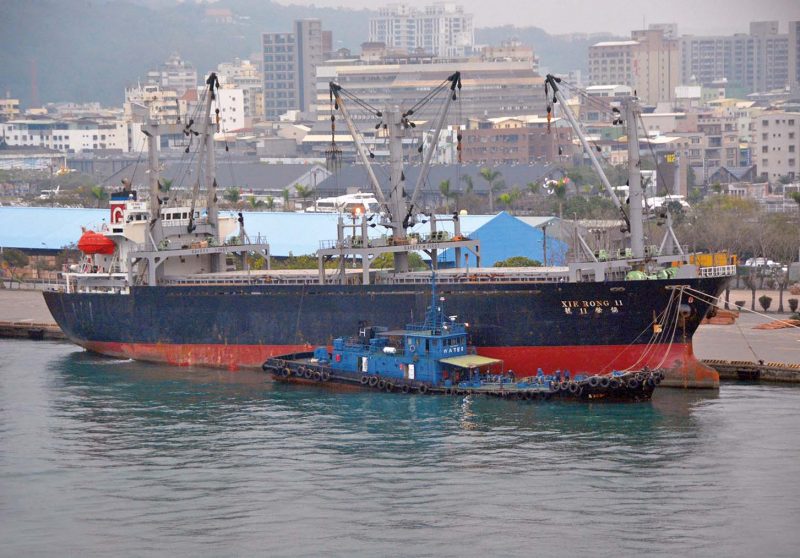
The Cijin Fishery Harbour
Cijin Island formed a breakwater for the original small Kaohsiung harbour with a berth for sailing ships in the First Harbour and also opposite the island at Shoushan. The Cijin Coastal Park today forms a part of the island, with the First Harbour of the port at the northern end, and the Cijin Fishery Harbour at the southern end and home to a large fleet of Taiwanese factory trawlers. The First Harbour has the Shoushan wharves for coastal shipping opposite, and is a four sided enclosed dock for fishing and recreation boats. Ferries cross regularly the short distance from Gushan Ferry Pier at Shoushan to Cijin Island, which is also connected to the mainland by underwater tunnels. The entrance used by shipping between the northern end of Cijin Island and Shoushan on the mainland is very narrow, but is deep enough for fully laden Panamax bulk carriers to transit. Larger vessels use the second port entrance between Cijin Island and the Zhongxing Container Terminal. The second entrance was formed in 1975 by breaking the land bridge between Siaogang and Cijin Island.
The Linhai Industrial Park is located at the southern end of the harbour opposite the southern end of Cijin Island and the Intercontinental Container Terminal 6 and the Zhongxing Container Terminal 4. It contains the Dalen Container Terminal 5, the huge Chinese Steel works, the massive shipyard of CSBC Corporation, and the CPC oil refinery. The Talin Power Plant is a fossil fuel powered power station and located in the industrial park, whose construction began in 1960 and was completed in January 1972.
The Linhai Industrial Park is accessible within walking distance to the south of the Siaogang Subway Station of the Kaohsiung Mass Rapid Transit (KMRT) system. The red and orange lines of the system with a total of 37 subway stations opened in March and September 2008, and the circular green line of the system to Kaohsiung Exhibition Centre with eight subway stations was undergoing trials in 2017. The Formosa Boulevard Station and the Central Park Station of the KMRT have won awards for their floral decorations, and are ranked in the top fifteen most beautiful subway stations in the world. Kaohsiung is a very modern city with a ‘go-ahead’ attitude to attracting inward investment and tourism.
Second Kaohsiung Port Development
A second port is being developed to the seaward and adjoining the current Zhongxing Container Terminal, and just to the south of the main channel into the second port entrance. Phase 2 of the Intercontinental Container Terminal (ICT) construction project got underway in 2017 with shoreline reinforcement, earthworks, and workboat basin dock construction. The Hung Hwa Construction Company (HHCC) began preparatory work for ten new deep water petrochemical wharves, relocation of current petrochemical storage tanks, and to develop an offshore petrochemical complex.
A large number of caissons each 21.5 metres high and of 7,000 tonnes capacity are manufactured on land near to the port and are then towed and sunk at the new port site located 3,563 metres offshore. The caissons, 180 in number are needed, form a stable underwater platform on which to build the petrochemical facility. After installation, the caissons attract sea life and offer shelter for fish, making the whole process ecologically feasible. The target date for completion of the new second port is the year 2021. Further details are available from the Taiwan International Ports Corporation.
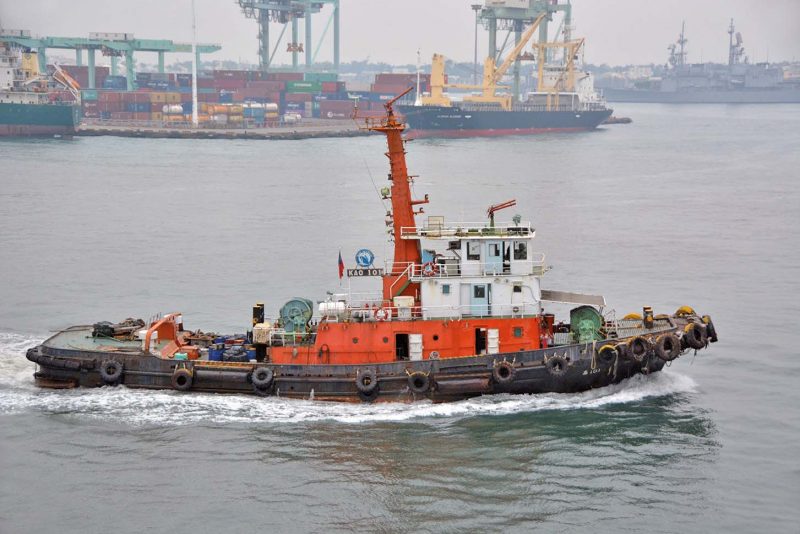
Postscript
Despite its modern hustle and bustle, Kaohsiung has not turned its back to the ancient traditions of the city e.g. the beautiful Confucius Temple at the Lotus Lake in the city, or the Love River that flows south into Kaohsiung harbour, with excellent walking paths and cafes along its banks and small cruise boats navigating its waters. Kaohsiung is known as the ‘Harbour Capital’ of Taiwan, with one of its long term imports being shark fins, which have been placed on the roof tops of residential houses in the city to dry out in the sun for decades, a practice still done today.
On 1st March 2012, the Harbour Bureau system of Taiwan ports officially ended for the four island ports of Kaohsiung, Keelung, Taichung and Hualien. In their place, the newly formed Taiwan International Ports Corporation Ltd. (TIPC) took over the port operation and management functions for the four ports, while the new Maritime and Port Bureau (MOTC) took over the former maritime and port policy functions. TIPC is a national State owned enterprise that is wholly owned by the MOTC, and is headed by a Board of Directors and a Board of Supervisors. The port statistics for the four ports are now published by the TIPC for the island of Taiwan as a whole. Kaohsiung and the other three ports offer an ideal base for trade and transhipment traffic, and are connected into the fast national rail and road system of the island. The Port of Kaohsiung is aiming high to become a megaport and hub in the 2020s decade for both the petrochemicals trades and the container trades.
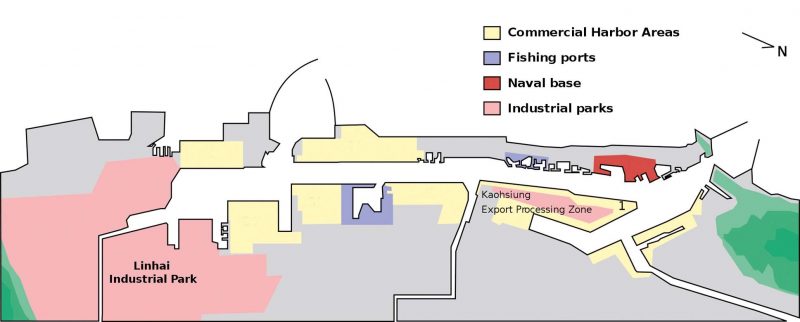
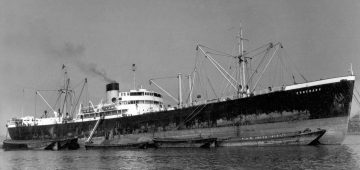



Comments
Sorry, comments are closed for this item